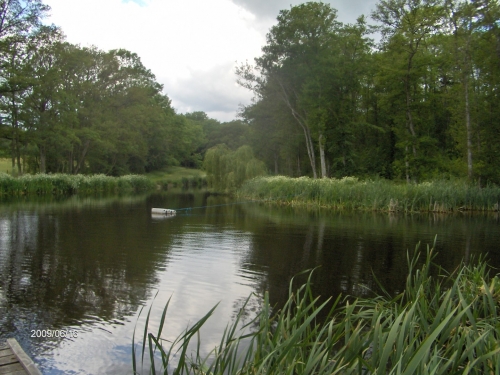Because water is a liquid with a good thermal conductivity, the heat transfer from the water, through a submersible heat exchanger to the heat transfer fluid used by the heat pump (glycol) is very efficient. This means that for the same amount of energy transfer at the same temperatures we can use shorter lengths of pipe and so less glycol than we would for a ground collector, and of course there is no need to dig trenches in a lake!
Since trenching, plastic pipes and glycol all cost money, using a water source can represent a big saving in the capital cost of the system for the customer.
The most effective water source heat exchangers are installed in running water. As heat is extracted from the water it is cooled down. Since the water is running, the cold water is taken away and replaced with fresh, warm water. However, because the water is running it is important to make sure that the equipment is firmly anchored, is protected from debris and is robust enough to prevent damage, will not cause an obstruction to the flow, and does not cause a flood hazard. Nuenta Energy Blades are designed for this application.
In situations where there is a large body of water, such as a lake or large pond it is sometimes cost effective to install beds of plastic geothermal pipe coiled up in a spread out helix. The pipes sink to the bottom of the lake when they are filled up with glycol and so cannot be seen once they are installed.







